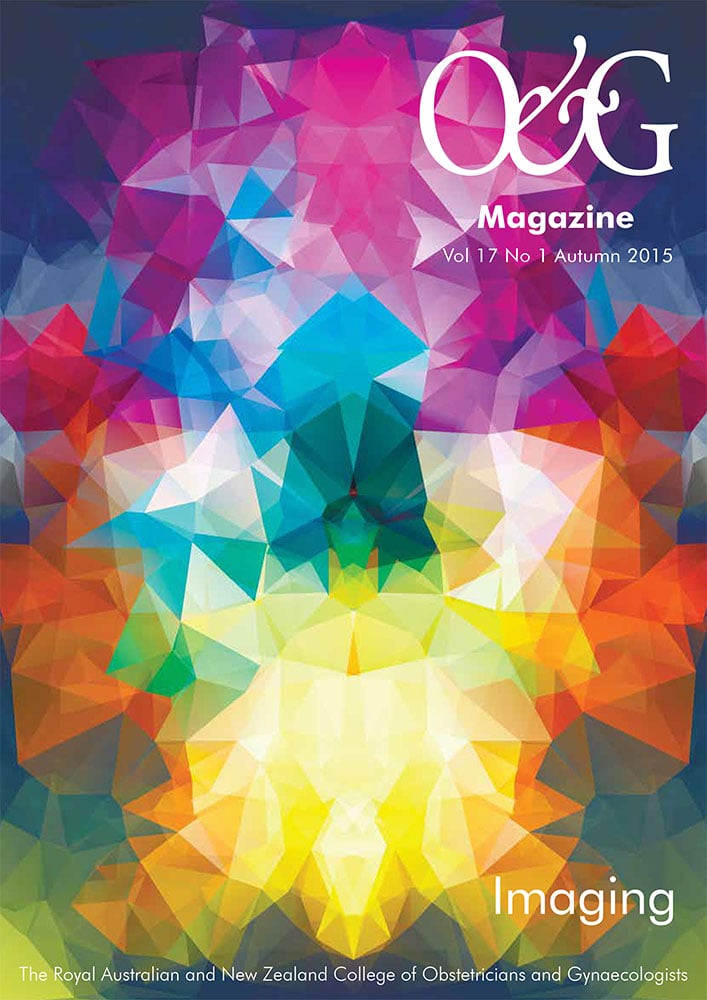It is just over 50 years since Prof Ian Donald (1910–1987), a Scottish obstetrician, pioneered the use of ultrasound in medicine. His article published in the Lancet in 1958, ‘Investigation of abdominal masses Dr Gillian Gibson by pulsed ultrasound’1, was a FRANZCOG milestone in the field of imaging. A medical officer in the Royal Air Force, he drew on experience with radar during World War 2 and a lifelong interest in machines. Assisted by the research department of a local engineering firm, a device used in the Clyde shipyards to detect flaws in metal was successfully modified to image internal organs, including the gravid uterus.2
Today, medicine uses ultrasound to facilitate complex procedures, such as laser coagulation for treatment of twin-to-twin transfusion, through to diagnosis of ectopic pregnancy early enough to offer medical treatment, not only to prevent maternal mortality, but also potentially preserve future fertility.
Undeniably, the development in ultrasonography that has had the widest reach is imaging unborn child. It has become an integral part of antenatal care with women and families eagerly awaiting a snapshot of their expected child – so much so that as clinicians we often need to remind them finding out the gender is incidental, not the purpose of the investigation. How should we respond to our patient’s question ‘Is everything normal?’ The reliability of a midtrimester morphology scan is reviewed in this issue. What about the role of a routine third trimester ultrasound? Our expert also updates us on the defining role of Doppler study of the fetal brain circulation in the management of the small-for-gestational-age fetus.
Ultrasound is also key to assessment of acute gynaecological presentations and is a pivotal investigation in refining a differential diagnosis. The advice of our expert when an ectopic pregnancy is suspected is not to rely on the pelvic ultrasound report alone. Review the images yourself and talk to your radiologist. Are you familiar with the imaging significance of the ‘ring of fire’, the ‘bagel ring’, or the location of Morrison’s pouch? What risk factors in the clinical history raise the possibility of heterotrophic pregnancy?
This issue includes review of other imaging modalities that have come into increasing use as therapeutic as well as diagnostic purposes. Interventional radiology now has subspecialty status in Europe, with percutaneous drainage the commonest application and there is an evolving database on uterine fibroid embolisation. Uterine arterial embolisation has made a significant contribution to the management and prevention of catastrophic postpartum haemorrhage.
Magnetic resonance imaging (MRI) has contributed significantly to our specialty, often complementing ultrasound, to assess placenta accreta, characterise pelvic masses, stage malignancy and diagnose fetal conditions. Whereas ultrasound poses limitations for the obese patient, MRI is much less confined by the depth of field. There is an alarming reminder that breast cancer affects one in eight women in Australia by the age of 85 years. The role of risk stratification for breast screening is explored and specific indications for MRI given.
MRI and computed tomography (CT) imaging can help solve diagnostic dilemmas, but what are the safety concerns for pregnancy when such tests are unavoidable? With a background risk of childhood cancer 1:500, the table provided in this issue gives useful guidance to the comparative risks of various radiological modalities during pregnancy.
Originally, the O&G Magazine Advisory Committee, which sets the themes for each issue, had planned an issue about new surgical and radiologic tools, but soon realised the advances in imaging had made as much, if not more, impact to the practice of our specialty and thus are deserving of a whole issue.






Leave a Reply